Bean gall (above)
Caused by the sawfly Pontania proxima. Forms on upper surfaces of willow leaves, especially crack willow and weeping willow.
Spruce pineapple gall
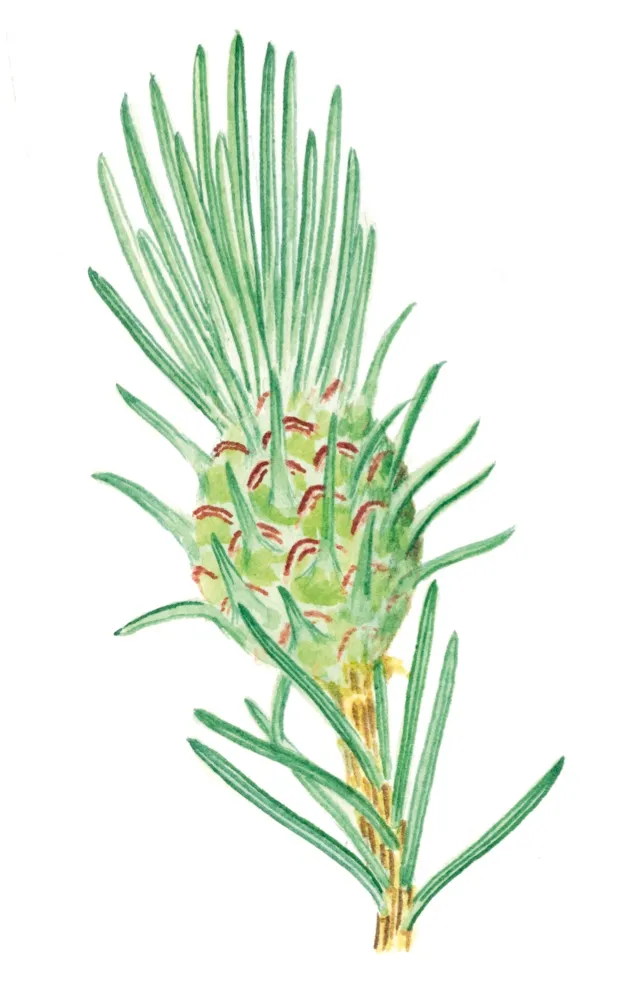
Caused by the aphid Adelges abietis. Found on the twigs of spruce trees, often Norway spruce. Young aphids shelter inside the gall cavities.
Fern gall
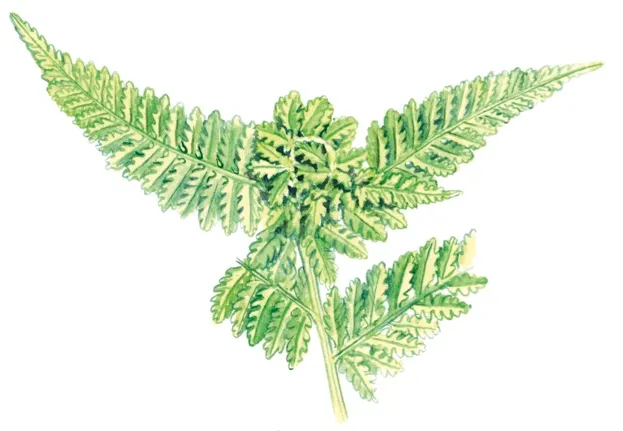
Made by the fly Chirosia betuleti. Occurs on ferns, especially male fern, causing rolled-over, deformed frond tips. Fly larvae dig into the fern stem.
Reed cigar gall
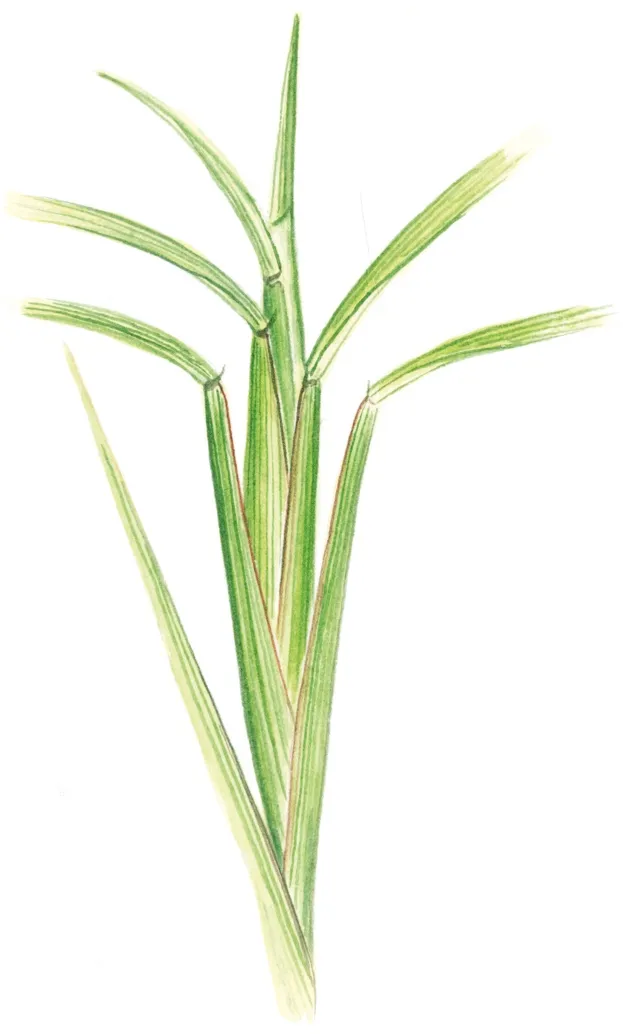
Caused by the fly Lipara lucens. A common, cigar-shaped gall on reed stems; conspicuous in late autumn. Each gall contains a single fly larva.
Ergot
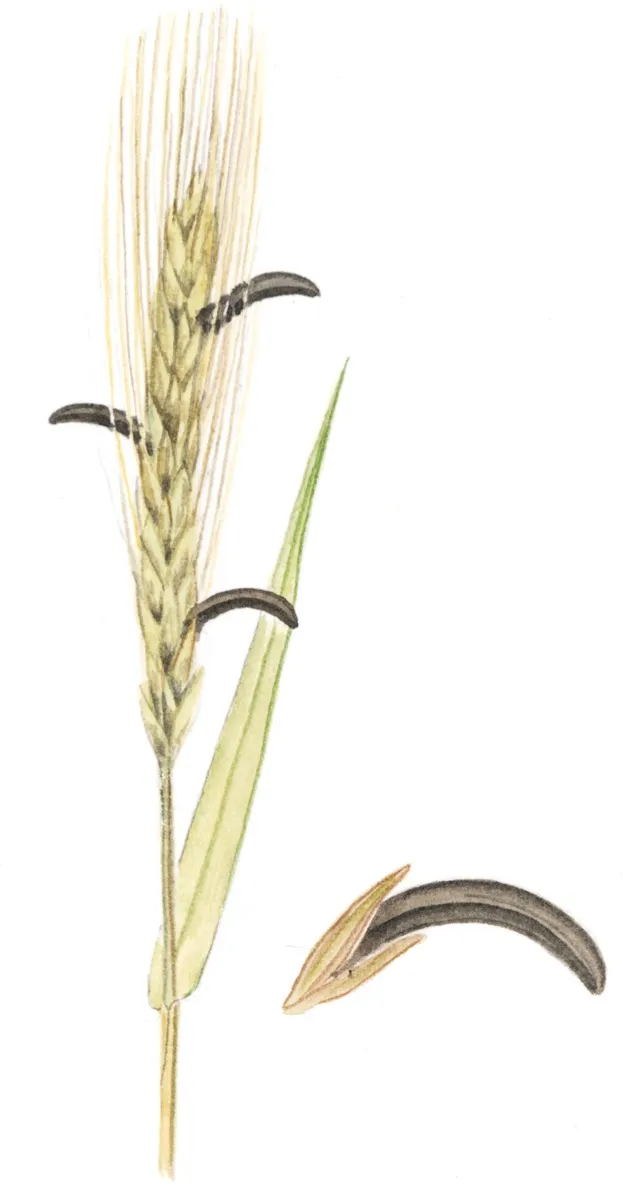
Caused by the fungus Claviceps purpurea. Occurs on seeds of grass, including rye and false oat. Toxic – was a scourge of medieval Europe.
Tassel gall
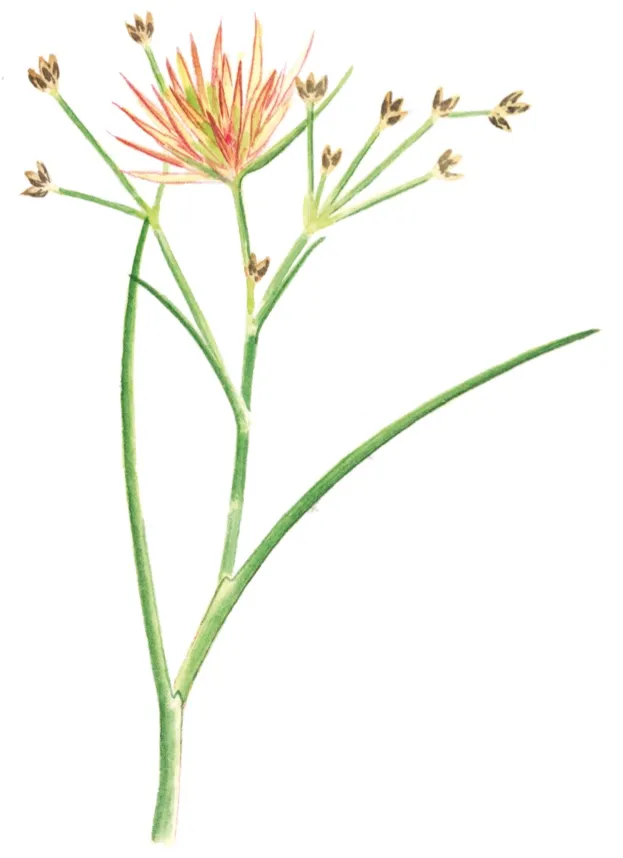
Caused by the psyllid (jumping plant louse) Livia juncorum. Found on flowerheads of rushes. Common in damp places throughout UK.
Ramshorn gall
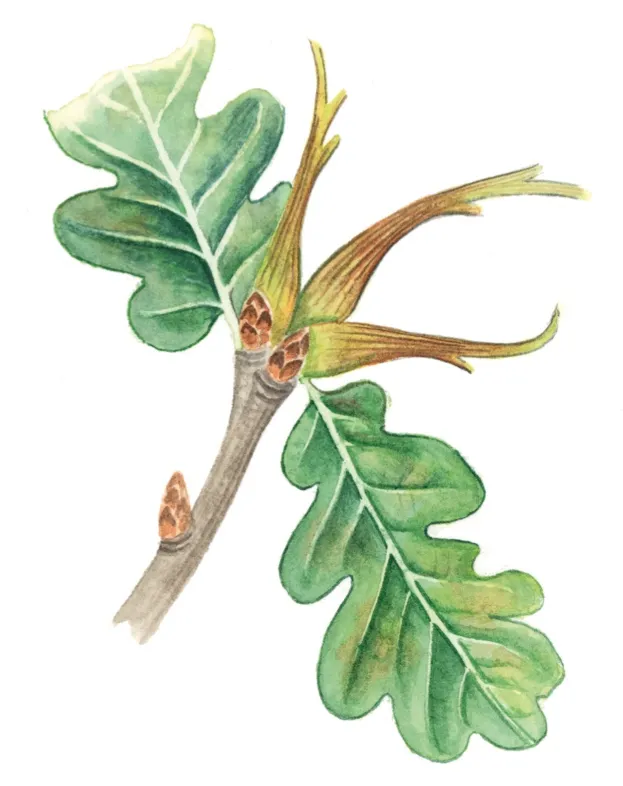
Made by the gall wasp Andricus aries. Occurs on oak trees, turning the buds into long prongs. Mainly in south; first seen in UK in 1997, but spreading.
Pea gall
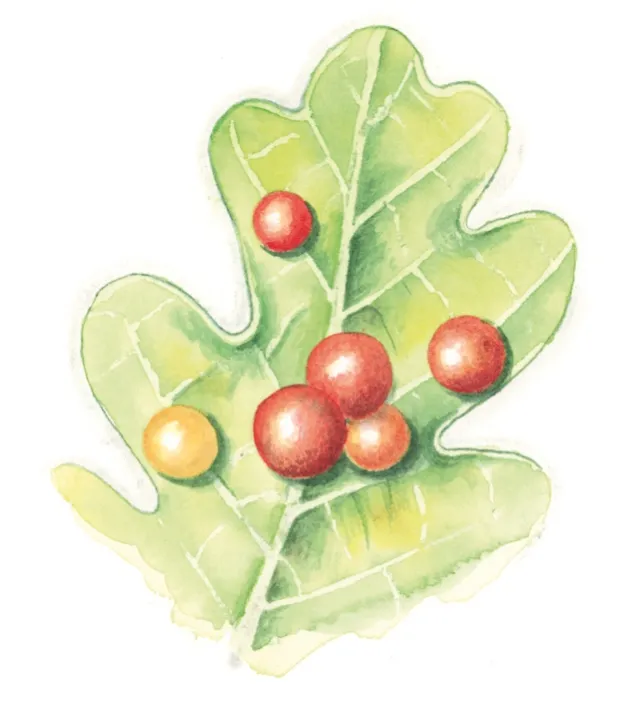
Made by the gall wasp Cynips divisa. Occurs on undersides of oak leaves, falling in autumn. Wasps emerge in winter and lay their eggs in oak buds.
Silk button spangle gall
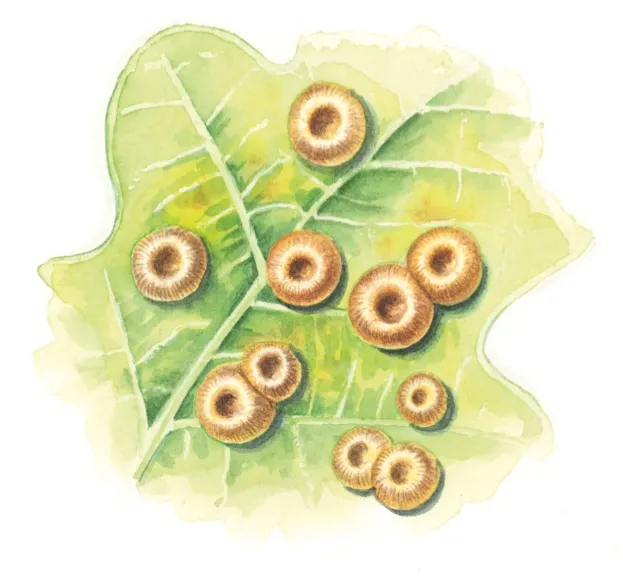
Made by the gall wasp Neuroterus numismalis. Found on oak leaves, often in big numbers. Falls to ground in autumn; wasps emerge in spring.
Witch’s broom
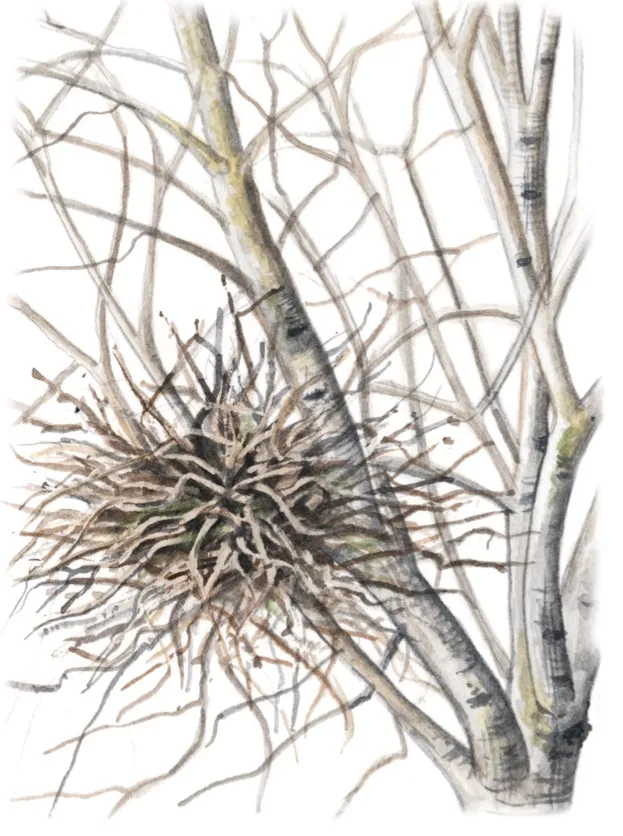
Has many causes, including insects, mites, fungi and viruses; usual trigger is the fungus Taphrina betulina. Occurs on birch and cherry trees.
Nail gall
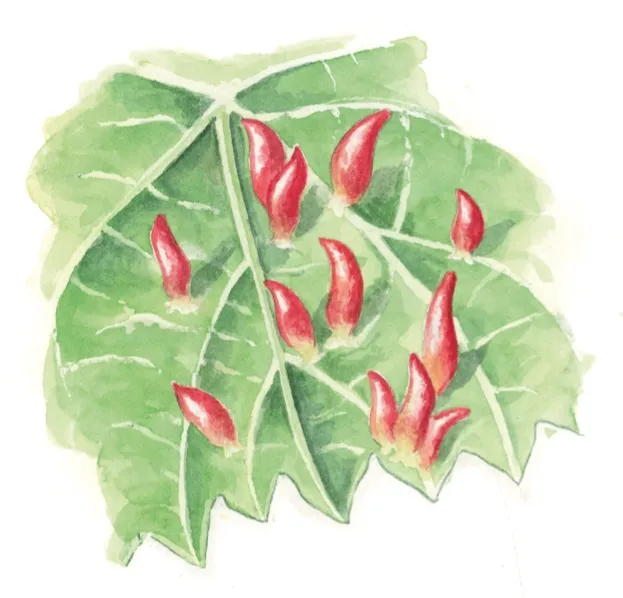
Caused by the mite Eriophyes tiliae. Very common on lime tree foliage, appearing in summer and persisting until leaf fall in autumn.
Robin’s pincushion
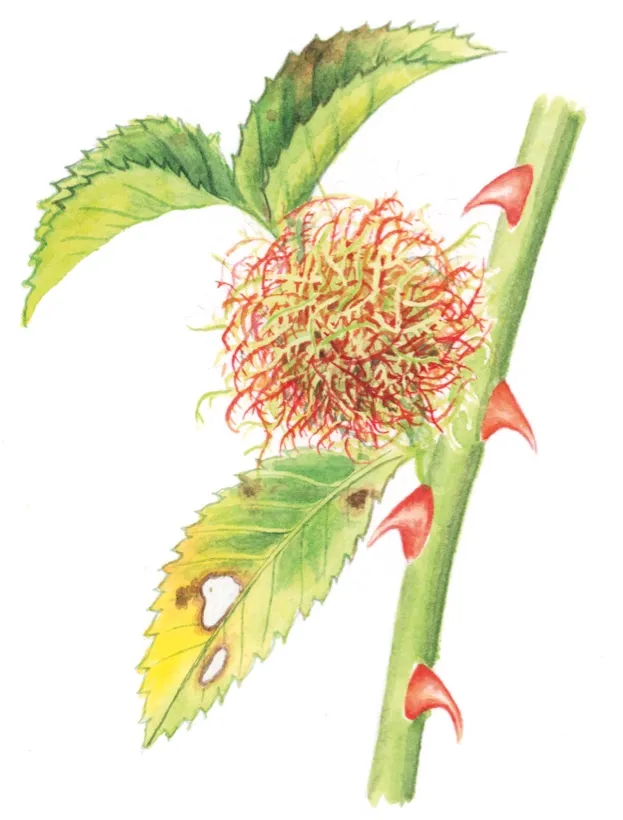
Made by the gall wasp Diplolepis rosae. Found on wild roses. The red, feathery mass contains many chambers, each with a wasp grub.
All illustrations by Felicity Rose Cole




